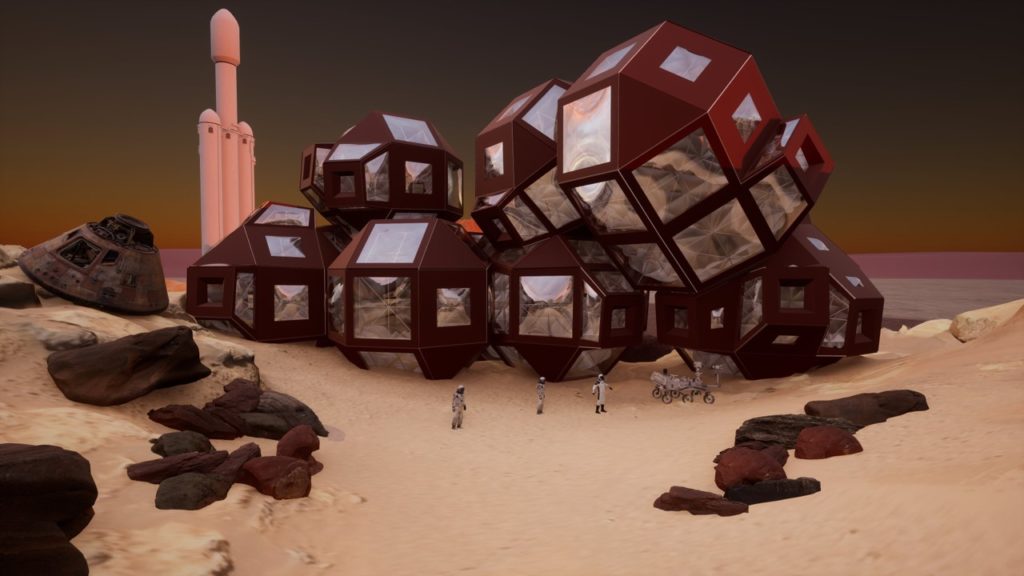
Design Brief and Scope
The purpose of this project is to design a colony on Mars to sustain life for 50 people with the possibility to expand to 300 people over time. This specific projects revolves around the specific function of recreation.
Site Detection and Analysis
ChatGPT 3 is used to create a relative grading system to guide the decision towards the ideal first settlement location on the Red Planet based on certain parameters that you can see in Table 1. Those values were transferred to Excel to better visualize those results. Confronting and voting with the other groups the most suitable site candidate was chosen to be Jezero Crater.

The team conducted a research project on space recreation, with a focus on Martian habitat. They initiated their research by asking chatGPT to create a relative grading system of the key factors for human colonization on Mars. To achieve this, they created five attribute diagrams based on sunlight, water, proximity, terrain, climate exposure, and available data. Based on the visualized output metrics, the most probable winner was the zero greater, as seen in the star plot. Through NASA’s data and Blender a site model was constructed and uploaded in Speckle.



As first approach, to understand the context, a study was carried around architecture in harsh environment. A knowledge of many technical aspects was collected during this research but concluded in understanding that in all case studies the recreational program was neglected.
Recreation has a huge importance on physical and psychological human health, especially in enclosed spaces. For that reason the core concept is conceived from the need of fighting monotony typical of the astronauts stations. The strategy consists in breaking the traditional design space, cut it into parts and reassemble those into something new that, because of the nature of the new configuration, forces people into new interactions with space creating the correct setting for training and entertaining.
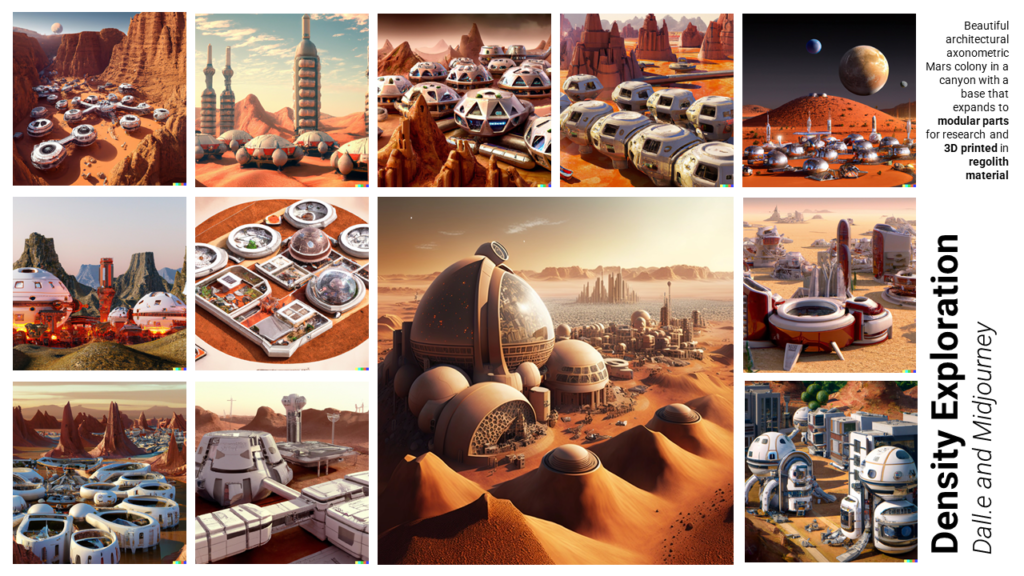
To achieve valuable recreational spaces on Mars, the group explored various AI image generation tools and density variations of potential colonies module unit designs. They even had fun creating Martian fashion shows, playgrounds, Nike stores, and pizza arts. The group also utilized existing technologies such as Blockchain to provide built-in redundancy and resilience with its decentralized approach. They created an urban syntax consisting of neighborhood clusters and infrastructure and algorithms were created to automate neighborhood establishments.
Masterplan
To devise a clear logic for the collective collaboration between the different groups, the group zoomed out and conceptualized the workflows of all the various stages of design. They conceived the collaboration plan as a series of connected cock wheels. The group investigated the volumetric space requirements of the various recreational activities and created a speckle stream that combined all the group’s geometry. Analytical Information on the structure and the logic of the Masterplan can be found in Collaborative Workflows Final Report [Here].
Program
Then on to program analysis, first step was to investigate the volumetric space requirements of the various recreational activities. From that a unit element is deduced to create a synthetic elementary space that combined with more of the same can create elaborate and bigger spaces in all directions.
From program to form, the lessons learned from the numerous cases studied guide the technological approach of design. Each layer has a specific purpose
- Because of the limited radius of the shipment rocket the module’s radius is kept under 8.5 m
- The unit’s structure will be unfolded on site avoiding possible mistakes of assembly
- Structure then is pressurized through the use of inflated cushions to contrast the thin atmosphere of Mars and the interior pressure created for normal breathing
- A regolith paneling system is customizable on site in its thickness to shield the structure from dangerous solar radiation
Form Finding
The objective of this study was to develop a modular and scalable structure suitable for Phase I, which is expected to host three visits to Mars, Phase II and Phase III. The primary focus was on exploring polyhedron shapes and their geometrical properties, taking into consideration the unique requirements of the Martian environment.

The investigation began with form finding, in which various polyhedron shapes were explored due to their bone-like connections and potential for creating openings on offsetted normals. Four candidate shapes were ultimately identified, each featuring three layers of protection: a structural truss skeleton, inflatable cushions, and a regular regolith 3D printed shell with a structurally optimized cross-section.
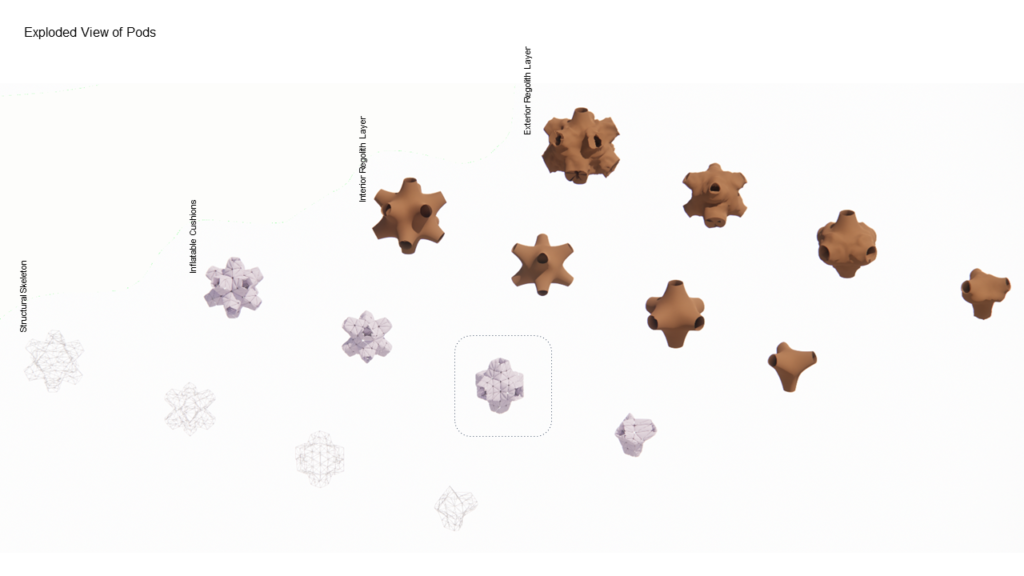
To determine the ideal sizing ratio, genetic optimizations were conducted via Octopus based on area-to-volume ratios of the shapes (a paramount factor for 3D printing), total annual radiation, and structural displacement. This approach led to a turning point in the project, prompting a reconsideration of the complexity of the design and its impact on material selection.

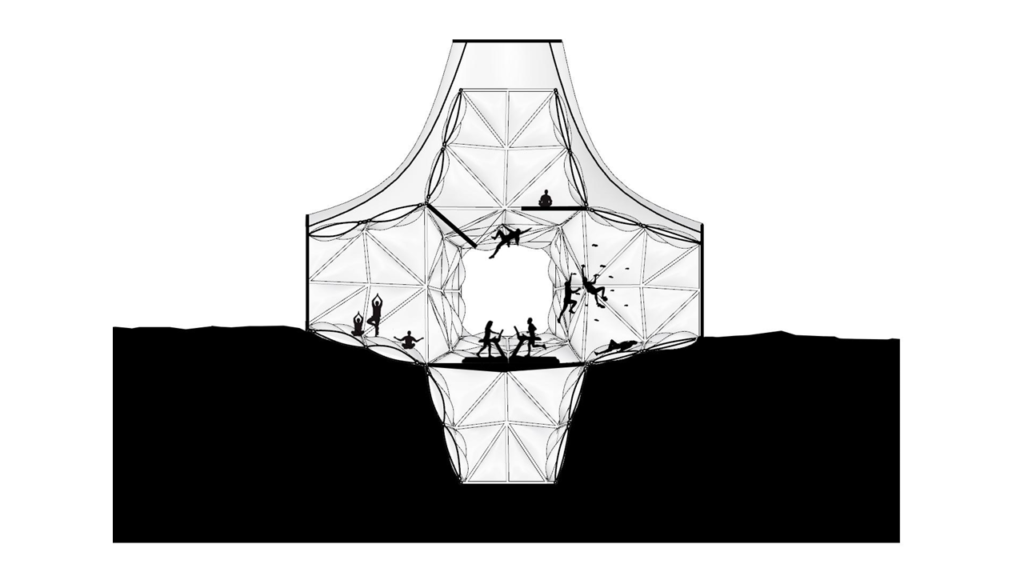
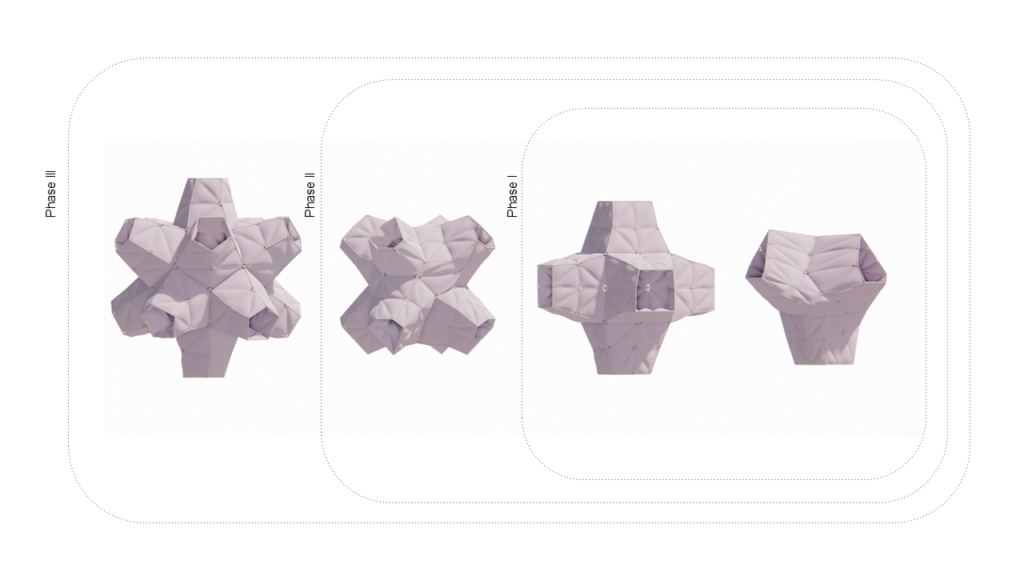
Upon reflection, it was concluded that the complex structure was unnecessary, and that simplification of the form would allow the program and its functions to thrive more effectively. Consequently, the design was revised to prioritize the ranking of the habitat’s phases, with shortened limbs and a planar configuration to accommodate recreational uses and support pragmatic implementation.

Aggregation
The design of Martian habitats for Phase I, II, III colonies requires an in-depth understanding of spatial qualities and their impact on modular form and aggregation logic. It is important to dilute how these qualities influence the development of the recreational program and the rules governing the aggregation process.
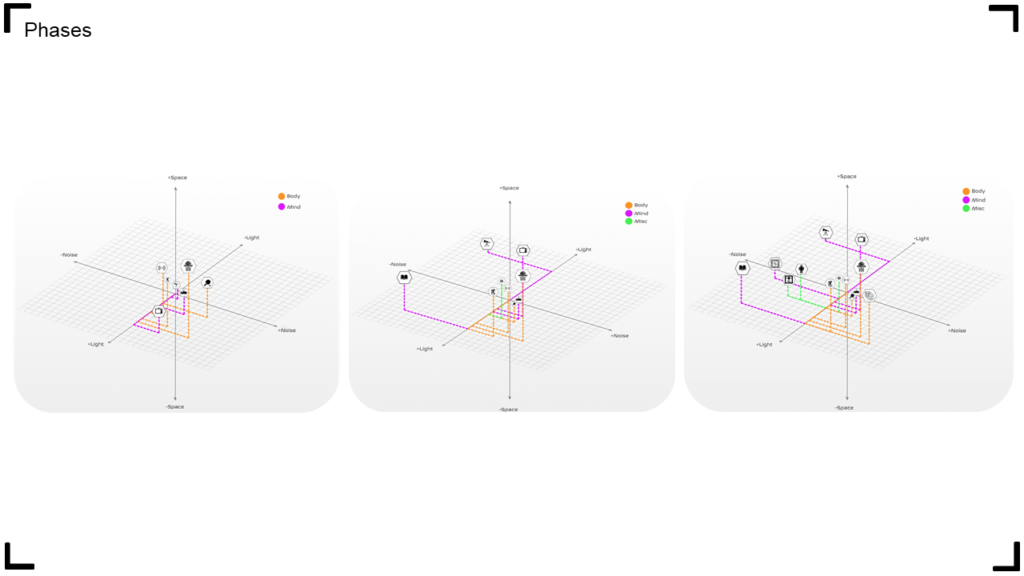
To address the complexity of the recreational program, 3D diagrams were created for Phase I, II and III colonies. These diagrams classify amenities based on light, space, and noise requirements, which in turn inform the aggregation rules and assigned usages for the project. The expansion of the project is visualized through a timeline.

The illustrated expansion of the teams pods regarding phase I , II and III is shown regarding the masterplan. In the aggregation process, windows as smart objects are installed after ruled connections are established, providing support constraints to ensure robustness and structural integrity. These constraints adhere to the master plan restrictions, which allow for 1,800 possible connections, with some exceptions based on information diagrams that require forced adjacencies. The resulting aggregation is characterized by a controlled catalog of elements that proceed in a playful manner.

The aggregation results were utilized in a virtual environment in a playful manner called the “project disCo”, which allows for the application of physics and the delicate editing of aggregation parts. Furthermore, any element can be delicately replaced within the virtual environment.
Computational
For a one-year trip to Mars, the design of Martian habitats must account for numerous environmental and structural factors. This study focuses to analyze relevant events, as well as the development of a holistic structural approach to optimize habitat design. An EPW file was created from CSV data, incorporating information on sun, sunlight hours, total annual radiation, and plotting wind rose diagrams. Temperature differences were found to be profound, while wind speeds were relatively low due to the thin atmosphere meaning they can be neglected for the sake of this structural analysis. A holistic structural approach was employed, considering pressure differences, mass gravity, and the stresses of the system.



Structural truss optimization was performed, demonstrated in blue with normalized thickness for visualization purposes, resulting in a max displacement of 4 centimeters. To facilitate an efficient exterior and a unique threaded solution for the pods, a volumetric enclosure was created and a new radiation analysis was applied. A new probabilistic aggregation was then established, focusing on the red values of the solar irradiation diagram compared to the blue zones of the existing model. The thickness of the voxels created informed the Revit panelisation parameters. The creation of a volumetric enclosure and new probabilistic aggregation ensured that environmental factors were appropriately considered in the design.

By employing a comprehensive environmental radiation analysis and a holistic structural approach, the study has contributed valuable insights for the creation of habitats suitable for a one-year trip to Mars and aided in the proper corresponding documentation. To proceed with the documentation an automation bot through Speckle was created to transfer the inflatable cushion’s abnormal geometry of Weaverbird into Revit.
Documentation



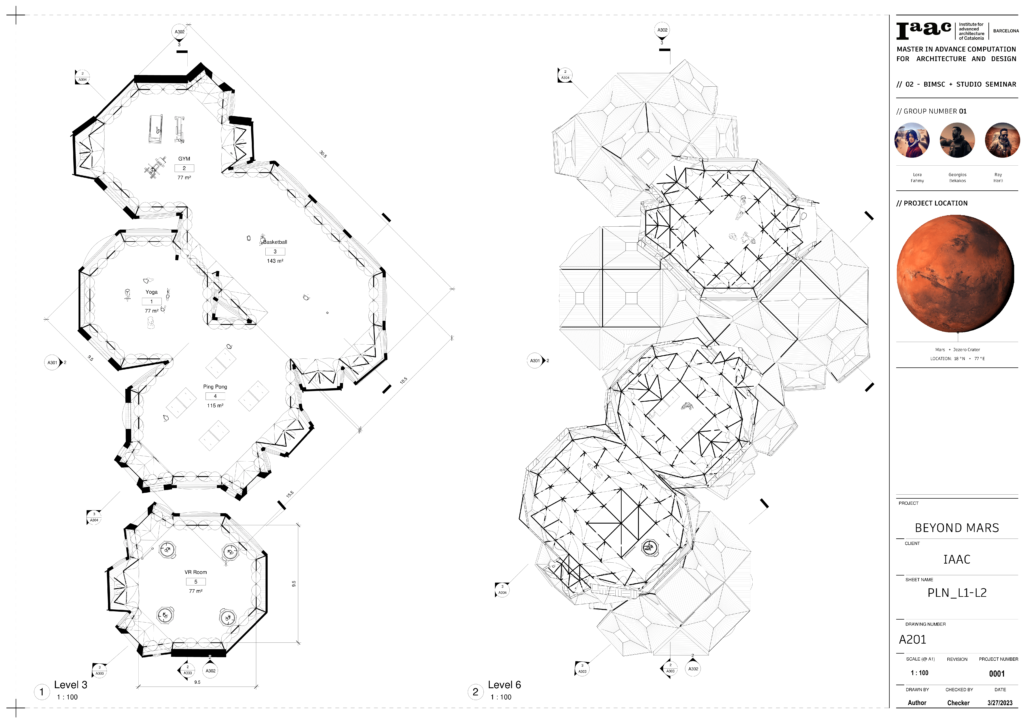

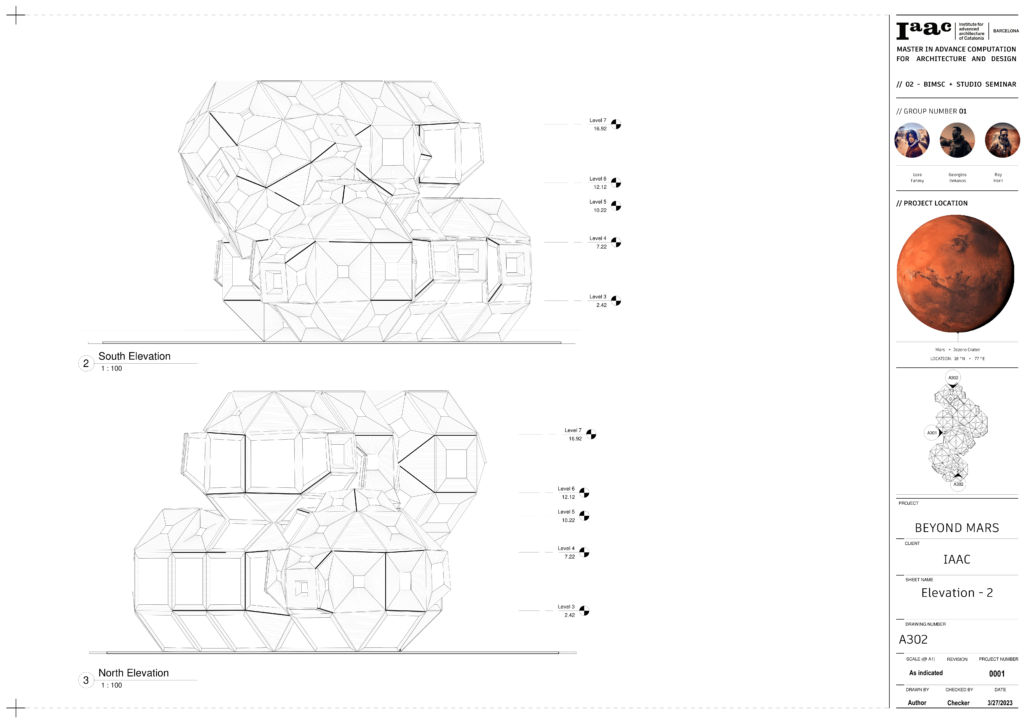
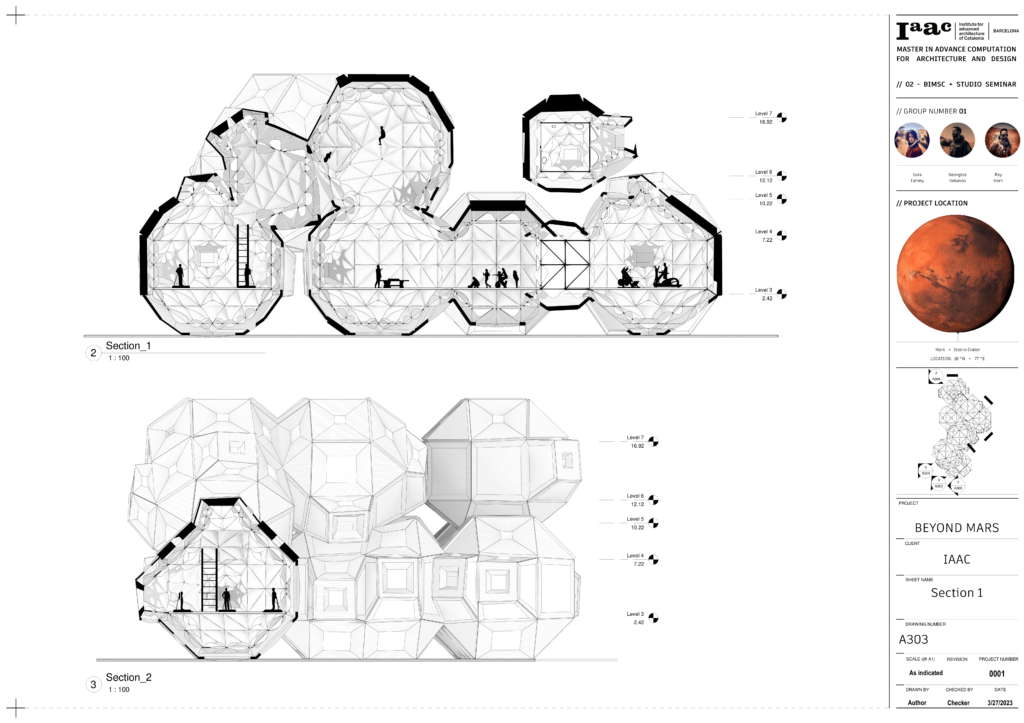
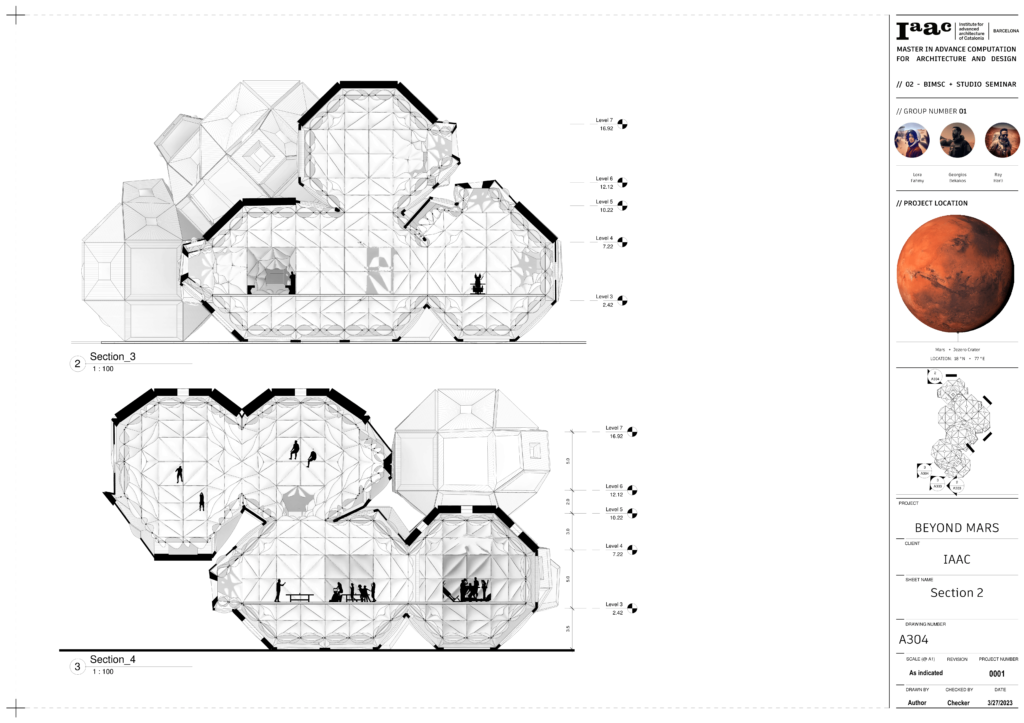
Analytical information regarding the documentation processes, phases, automations, filtering, BIM data flows and Rhino.Inside methodlogies can be found in the Integrative Modeling Final Report [Here].

